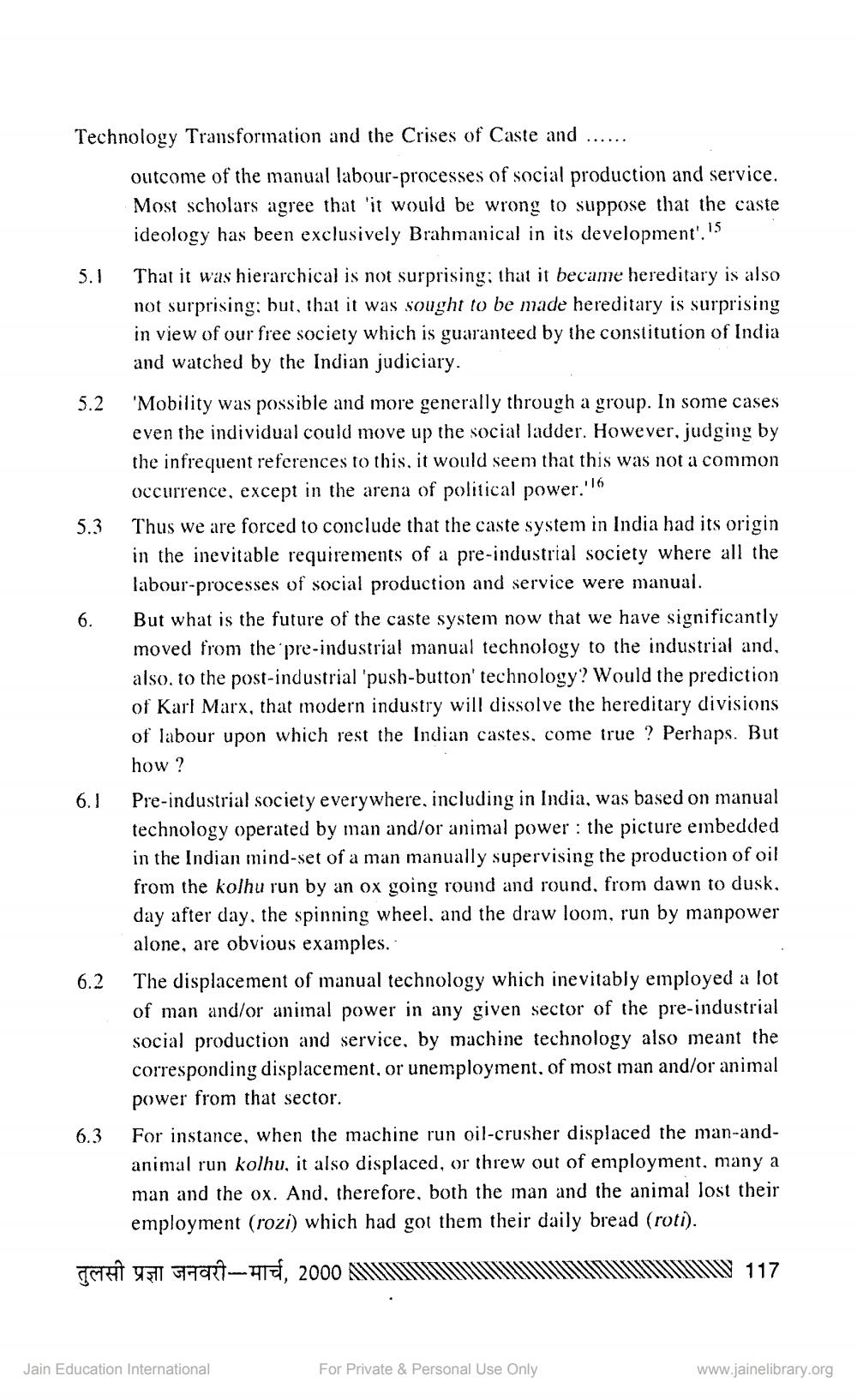________________
Technology Transformation and the Crises of Caste and
outcome of the manual labour-processes of social production and service. Most scholars agree that 'it would be wrong to suppose that the caste ideology has been exclusively Brahmanical in its development'. 15
5.1
5.2
5.3
6.
6.1
6.2
That it was hierarchical is not surprising; that it became hereditary is also not surprising; but, that it was sought to be made hereditary is surprising in view of our free society which is guaranteed by the constitution of India and watched by the Indian judiciary.
'Mobility was possible and more generally through a group. In some cases even the individual could move up the social ladder. However, judging by the infrequent references to this, it would seem that this was not a common occurrence, except in the arena of political power.'
116
Thus we are forced to conclude that the caste system in India had its origin in the inevitable requirements of a pre-industrial society where all the labour-processes of social production and service were manual.
But what is the future of the caste system now that we have significantly moved from the pre-industrial manual technology to the industrial and, also. to the post-industrial 'push-button' technology? Would the prediction of Karl Marx, that modern industry will dissolve the hereditary divisions of labour upon which rest the Indian castes, come true? Perhaps. But how?
Pre-industrial society everywhere, including in India, was based on manual technology operated by man and/or animal power: the picture embedded in the Indian mind-set of a man manually supervising the production of oil from the kolhu run by an ox going round and round, from dawn to dusk. day after day, the spinning wheel, and the draw loom, run by manpower alone, are obvious examples.
The displacement of manual technology which inevitably employed a lot of man and/or animal power in any given sector of the pre-industrial social production and service, by machine technology also meant the corresponding displacement, or unemployment, of most man and/or animal power from that sector.
6.3 For instance, when the machine run oil-crusher displaced the man-andanimal run kolhu, it also displaced, or threw out of employment, many a man and the ox. And, therefore, both the man and the animal lost their employment (rozi) which had got them their daily bread (roti).
तुलसी प्रज्ञा जनवरी-मार्च, 2000 1
Jain Education International
For Private & Personal Use Only
117
www.jainelibrary.org




